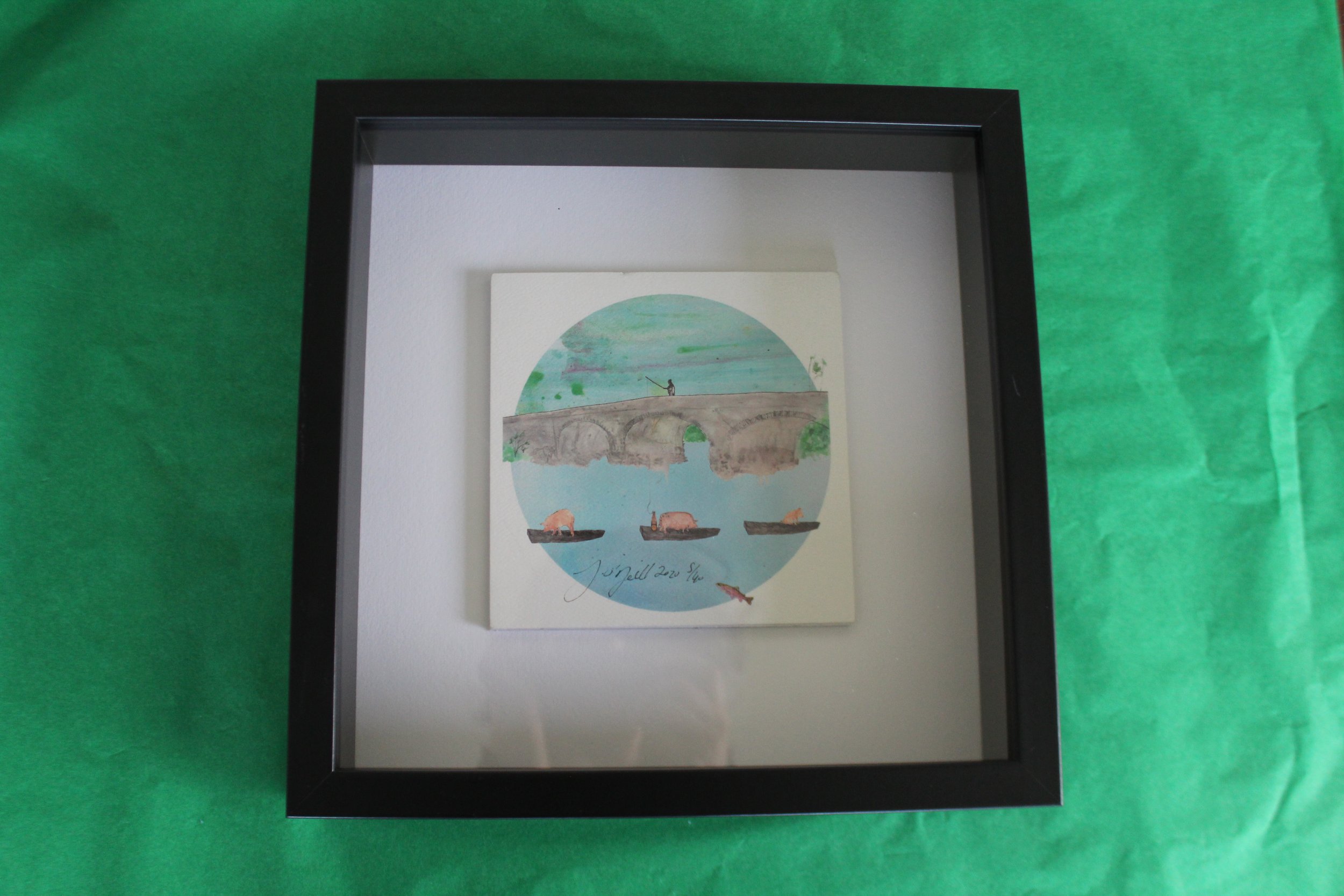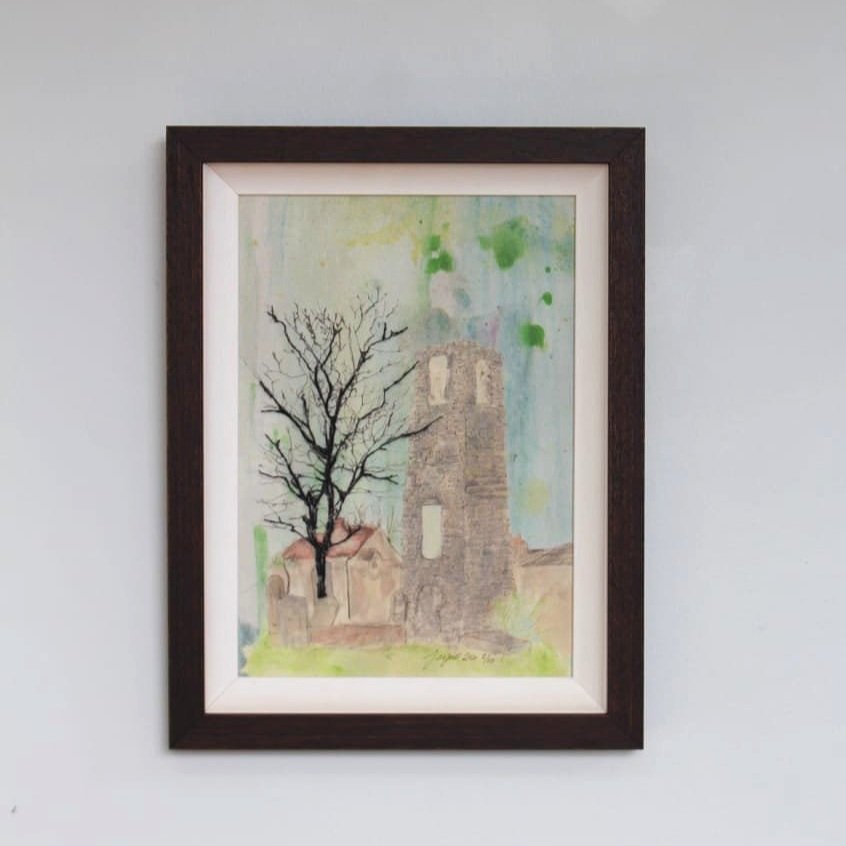 Image 1 of 1
Image 1 of 1


Traditions of Fishing & Smuggling on the river Erne (Small Framed Print)
Each print of original water colour and pen drawing is limited to 40 editions on each size and is signed and numbered by me, the artist.
The Story for this piece:
Many different types of fish inhabit the river Erne including the Silver Eel, Pike, Perch, Roach, Skimmers, Salmon and Trout. Belturbet has attracted huge numbers of fishermen over the years from all over the world for this reason . During the Second world war smuggling on the shores of Upper Lough Erne began. The normal supplies of food, including sugar cane ceased and the Republic started to produce its own sugar from sugar beet which in appearance resembles a small turnip. In order to produce the best crop, sulphate of ammonia was required, but none was available in the Irish free state. However it was manufactured in England and there was a plentiful supply in Northern Ireland. It was illegal to import it into the Republic, so it was smuggled across the border from a shop close to the frontier of the shore of Upper Lough Erne called Fays. For this purpose a large flat bottom boat called the Lough Erne Cot was built under the cover of darkness. Many goods were smuggled over the wide expanse of Lough Erne in all weathers and in total darkness. The well-used route across Lough Erne in Northern Ireland and into Follie’s Cut, then into the river in the republic, where a lorry awaited to receive the load which had to be carried up two fields from the shore. Having unloaded the five-ton cot the smugglers then loaded it up with young (sucker) pigs, which were well sedated with Guinness to keep them quiet during their midnight sail into Northern Ireland. There they were fattened up for the English market.
Information taken from George E. Morrissey’s book, Belturbet, A Chequered History
size: 26x26cm
Frame: Black box and white mount
Enjoy free shipping in Ireland
Each print of original water colour and pen drawing is limited to 40 editions on each size and is signed and numbered by me, the artist.
The Story for this piece:
Many different types of fish inhabit the river Erne including the Silver Eel, Pike, Perch, Roach, Skimmers, Salmon and Trout. Belturbet has attracted huge numbers of fishermen over the years from all over the world for this reason . During the Second world war smuggling on the shores of Upper Lough Erne began. The normal supplies of food, including sugar cane ceased and the Republic started to produce its own sugar from sugar beet which in appearance resembles a small turnip. In order to produce the best crop, sulphate of ammonia was required, but none was available in the Irish free state. However it was manufactured in England and there was a plentiful supply in Northern Ireland. It was illegal to import it into the Republic, so it was smuggled across the border from a shop close to the frontier of the shore of Upper Lough Erne called Fays. For this purpose a large flat bottom boat called the Lough Erne Cot was built under the cover of darkness. Many goods were smuggled over the wide expanse of Lough Erne in all weathers and in total darkness. The well-used route across Lough Erne in Northern Ireland and into Follie’s Cut, then into the river in the republic, where a lorry awaited to receive the load which had to be carried up two fields from the shore. Having unloaded the five-ton cot the smugglers then loaded it up with young (sucker) pigs, which were well sedated with Guinness to keep them quiet during their midnight sail into Northern Ireland. There they were fattened up for the English market.
Information taken from George E. Morrissey’s book, Belturbet, A Chequered History
size: 26x26cm
Frame: Black box and white mount
Enjoy free shipping in Ireland
















